The tiny landlocked nation of Laos is often overshadowed by its more famous Southeast Asian neighbours of Thailand, Vietnam and Cambodia on the tourist trail – but often becomes a favourite destination for those who do see this beautiful country for themselves. I spent 2 weeks in Laos between my trips in Northern Thailand and Northern Vietnam, and can say that Laos blew my mind – even compared to its popular neighbours.

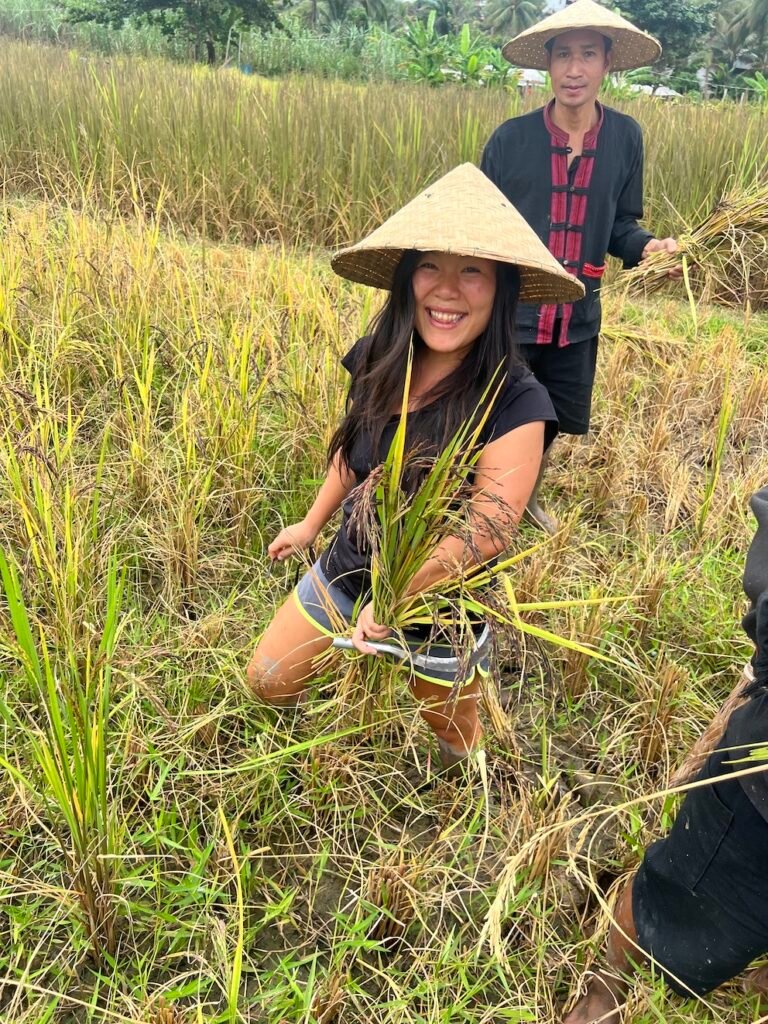

Present-day Laos can trace its rich cultural history to the Lan Xang Kingdom – which existed from the 13th century to the 18th century. “Lan Xang” means “Land of a Million Elephants.” While they no longer roam the country has they did in the past, elephants continue to play an important role in Laotian cultural history.
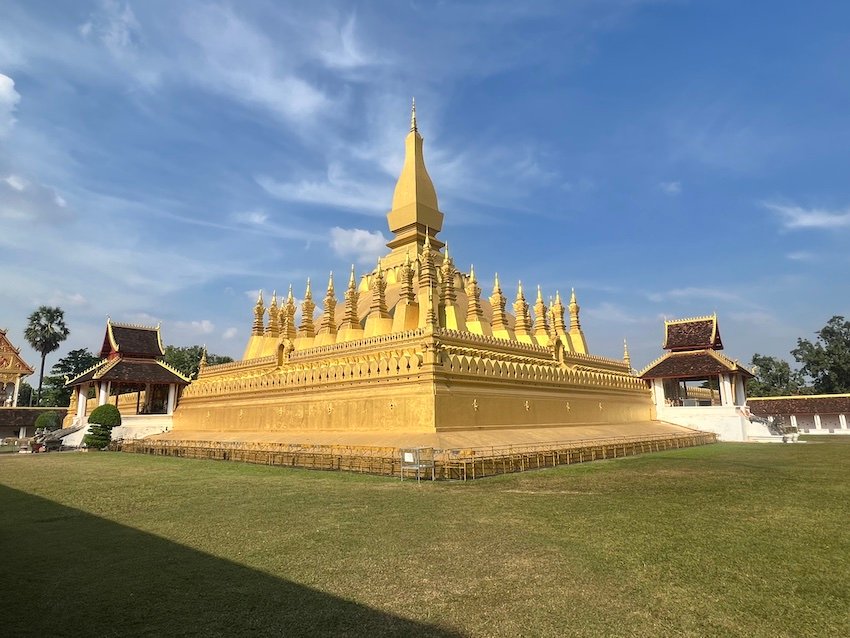
In the 18th century, the Lan Xang Kingdom broke into 3 kingdoms of Luang Phrabang, Vientiane and Champasak. The French united the 3 kingdoms in 1893 into what is now known as present-day Laos. Independence was gained in 1949, but independence did not create peace. The period after independence was characterised by civil conflict between the Communist Pathet Lao (supported by the USSR) pitted against the Royal Lao Armed forces (supported by the United States) until after the Vietnam War; which saw the Lao People’s Revolutionary Party came to power – which finally ended decades of civil war as well as the monarchy.

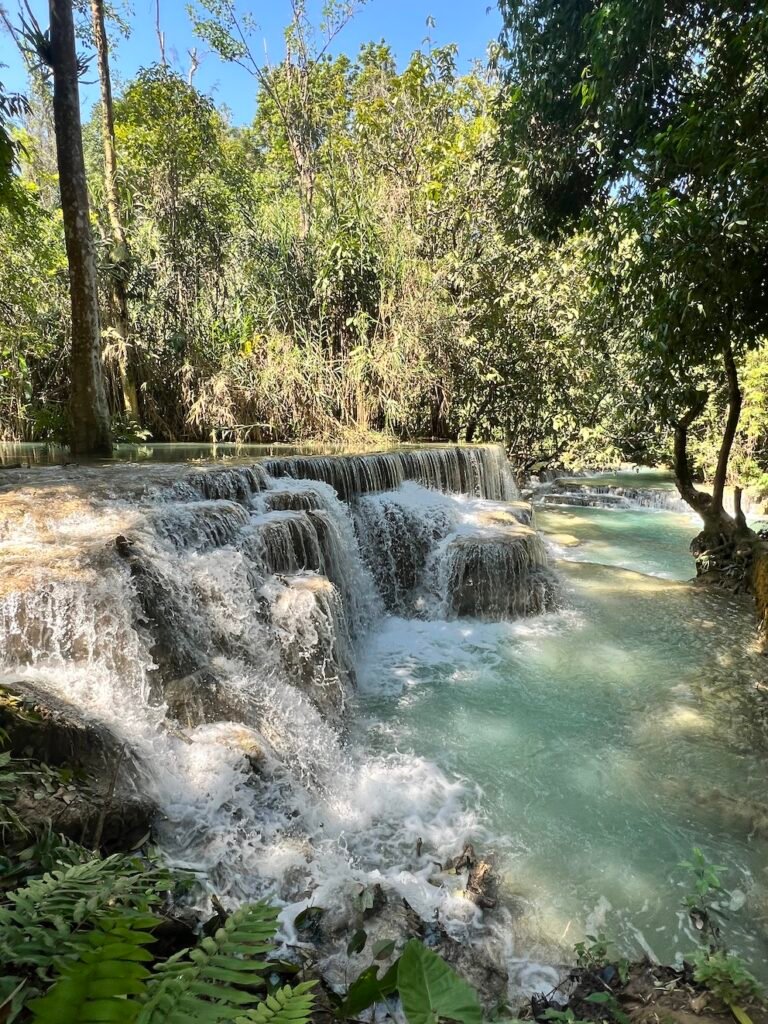
Content:
- Itinerary
- Luang Prabang
- Vang Vieng
- Vientiane
- Pakse
- Don Det
- Trip Costs for 2 weeks in Laos
- Recommended Reading List
- Final thoughts visiting Laos in 2 weeks
This post includes affiliate links. If you make a purchase via one of these links, I may receive a small percentage at no extra cost to you.
Itinerary:
After arriving in Laos via the slow boat transfer from Thailand, I spent 4 days in the beautiful city of Luang Prabang. I then took the brand new fast rail to Vang Vieng where I spent another 4 days. From Vang Vieng I took a bus to Vientiane where I spent one night. I then took the overnight bus from Vientiane to Pakse, where I spent one night, before taking a bus+ferry transfer to Don Det, where I spent 4 days in the 4000 Islands area. From Don Det, I took the ferry+bus transfer back to Pakse where I spent one night before flying into Hanoi for my 3 week trip in Northern Vietnam.
Day-by-Day of my 2 weeks in Laos:
Day 1 – 2: Slow boat from Chiang Rai in Thailand to Luang Prabang
Day 2 – 5: Luang Prabang
Day 5 – 8: Vang Vieng
Day 8 – 9: Vientiane
Day 10 – 11: Pakse
Day 11 – 14: Don Det
Day 14 – 15: Pakse
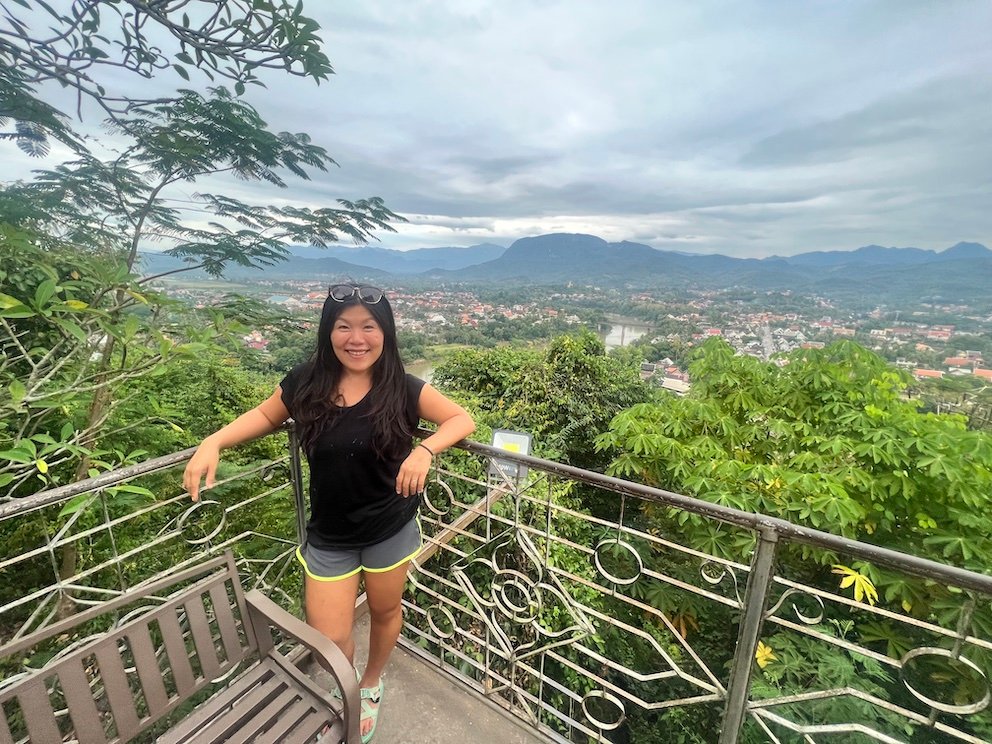


Luang Prabang:
The beautiful city of Luang Prabang in northern Laos, lies at the confluence of the Mekong and Nam Khan rivers. The royal capital of Laos until 1975, Luang Prabang now is a UNESCO World Heritage site with well-preserved architecture and monuments that tells the story of Laos’ colonial past.




Top sights in Luang Prabang include the Wat Xienthong, Phousi Hill, the National Museum, and the Luang Prabang Night Market. If you’re looking for souvenirs, definitely do your shopping at the Luang Prabang Night Market – it is the best market in all of Laos in my opinion.



A very unique experience in Luang Prabang, is the morning Alms Giving that happens around 5am – 6am daily. Locals engage in a spiritual tradition of giving alms to the local monks who make a morning procession through the streets of Luang Prabang. This post provides a very comprehensive guide on the Alms giving ceremony as well as discusses why tourists may wish to participate themselves or simply be respectful observers of the ceremony.

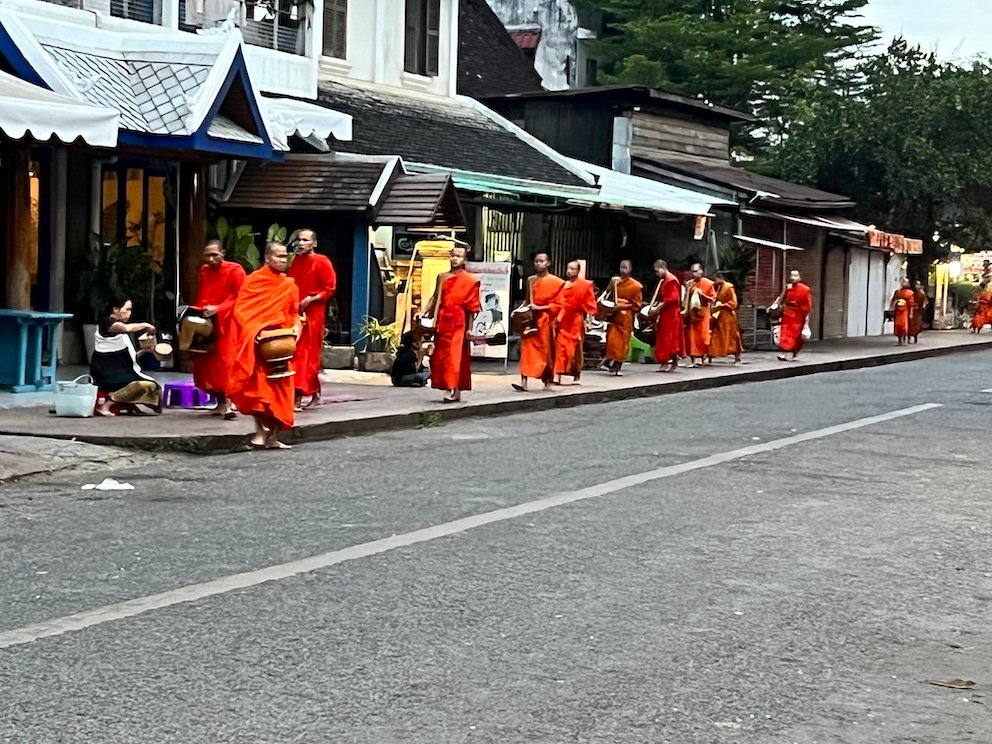
Just a short distance away from Luang Prabang, are the Kuang Si waterfalls. These spectacular falls are some of the most beautiful I have seen in the world. The falls can be visited by car or motorbike from Luang Prabang. Entry is 20,000 KIP (or about $1USD). If you don’t want to visit the falls on your own, this half-day tour will take you to visit the Kuang Si Waterfalls as well as a nearby Hmong village. You can also combine a visit to the Kuang Si Waterfalls with a river-cruise to also visit the Pak Ou caves on this full-day tour.

Sticky Rice or Khao Niew is such an important food staple in the daily life in Laos, that Laotians are known as the “children of sticky rice”. Round out your trip to Luang Prabang with a trip to Living Land Lao – where you’ll learn everything about the history of rice agriculture in Laos as well as have a chance to become a rice farmer yourself! Proceeds from the tourist activities at Living Land farms goes to support the local people and nearby villages – who are thriving due to the funding this tourist activity has been providing. Contact Living Land Lao directly for a tour, or you can combine the tour with a visit to the Kuang Si waterfalls in a day trip.



I stayed at the Downtown Backpacker’s Hostel during my stay, which is an excellent budget option in the Old Town center. For a luxury experience, you would be pressed to do better than the French-influenced Belle Rive Boutique Hotel, which is one of the best rated hotels in the city in an enviable location on the riverfront in the central historic district of the city. The Mekong Charm Riverside hotel combines the great location and river views of luxury hotels, with more affordable mid-range pricing.

Vang Vieng:
I took the brand-new rail line to get from Luang Prabang to riverside town of Vang Vieng. The road conditions between Luang Prabang and Vang Vieng are treacherous – and road travel can take 5-9 hours. The only reasonable way to travel is via the new rail line which cuts the travel time to just slightly over 1 hour! Note that buying rail tickets in-person at the ticket station in Luang Prabang is nearly impossible for a foreigner – as they will not accept credit card NOR cash – only an electronic payment system that only the locals seem to have. I basically had to convince a local standing in line at the ticket station to pay for me – and I paid them back in cash. You can bypass all this hassle by purchasing your train tickets online.


Vang Vieng was once the capital for wild river-tubing excursions that would stop at countless bars along the riverside. Sadly and somewhat predictably, the combination of excess booze in a river resulted a number of tourists deaths, which prompted the government to regulate river-tubing in Vang Vieng. Nowadays, you can still go river-tubing in Vang Vieng, but excursions are limited to only 4 bars on a river tubing excursion.



A word of warning about river tubing adventures in Vang Vieng. These are easily booked from guesthouses all over town, and run every day; but there is very little regard for safety – or even backup measures in case of faulty tubes. My tube ended up deflating during a several kilometre stretch of the river and while I brought it to the attention of the tour leader, they brought no spare tubes – so he just buddied me up with another tuber and we were kind of on our own (as the tour leader’s own tube was also deflating). They generally do not provide life-jackets – so I would strongly recommend not going tubing if you’re not a strong swimmer – unless your provider provides life jackets.
For a less booze-oriented tubing adventure, consider this day trip which explores the local Tham Xang water caves by kayak, and also gives you the option to either kayak or river tube yourself back to the city. Rock climbing is also a popular activity in Vang Vieng. The unique sport of Paramotoring is also available in Vang Vieng.
Aside from river tubing, Vang Vieng and its surroundings can be easily navigated by bicycle (rentals are about $5 – $10USD a day). There are various lagoons and caves near the Vang Vieng. Blue Lagoon 1 (Entry 10,000KIP or $0.50USD) is the closest to town and can be easily reached in about 1 hour via pedal bike. The Phu Kham Cave can also be accessed on the same entry ticket to enter Blue Lagoon 1, and is well worth the visit – hiking sandals (women) would be the ideal footwear to navigate the cave. Would strongly recommend bringing a headlamp if you have one as there is no lighting inside the cave – you can also rent headlamps at the entrance of the cave.


The Nam Xay Viewpoint is not to be missed. A fairly strenuous but non-technical 45 minute trail will take you up to the viewpoint. Once there, you’ll find breath-taking panoramic views – which for me were one of the highlights of my entire trip to Laos. You’ll even find an old motorcycle mounted at the top with a large Laotian flag to fly over the stunning views – definitely a highlight experience in Vang Vieng. The Nam Xay Viewpoint can be visited by scooter or pedalbike from Vang Vieng, or you can also do a day trip that combines a bicycle tour to Blue Lagoon 1 and the Nam Xay Viewpoint.


I would highly recommend the Vang Vieng Backpackers’ Hostel as an excellent budget option in Vang Vieng. The property has a pool, and often runs free BBQs and drinks nights for guests. The Simon Riverside Hotel is a well-reviewed mid-range option with air-conditioned rooms. For a more upscale option, the Riverside Resort Hotel is one of the best reviewed luxury options in the town.



Vientiane:
The Laotian capital of Vientiane displays a fascinating mixture of East meets West from the decidedly colonial-inspired Presidential Palace, and the Patuxay Victory monument – which takes inspiration from the French Arc de Triomphe – to the Buddhist Pha That Luang – the national symbol of Lao. I took a bus into Vientiane from Vang Vieng. While a rail connection exists, the bus in this particular connection is just as good due to the brand new highway that has been built between Vang Vieng and Vientiane.



Major sights in Vientiane include the Pha That Luang, the Patuxay monument, the Wat Sisaket, the COPE visitor centre, and the Vientiane Night Market. The Buddha Park a little outside the city is also well worth the visit if you have time to venture outside the city center.
The Sailomyen Cafe & Hostel is one of the best reviewed budget options in Vientiane. The S Park Design Hotel is a well-reviewed mid-range option with a rooftop pool, and finally the Crowne Plaza Vientiane with its stunning pool and spa is likely the best luxury option in the city.


Pakse:
Pakse is located in Southern Laos at the confluence of the Xe Don and Mekong rivers. From Vientiane, I took an overnight bus into Pakse. The city is a gateway to the Bolaven Plateau as well as to the 4000 islands at Laos’ southern border with Cambodia. The French had established a colonial outpost in Pakse in 1905, and the French influence is still prevalent in throughout the city’s architecture and infrastructure. With a population of 95,000 the city is the most populous of Lao’s Champasak province.


Major sights in the city include the Wat Phousalao (the massive Gold Buddha that overlooks the city); the Wat Luang temple, and the Vat Phou archaeological site. You can visit most major sights on your own by motorbike, or look for an organised excursion that will take you to the sights if you are not comfortable driving a motorbike on your own. A popular activity from Pakse is ride a motorbike around the “Bolaven Loop”. There is a shorter route that can be done in 2-3 days, and an extended loop that can be done in 3-4 days. This blog post is a good overview of the route. If you have not ridden a motorbike before, I would not recommend riding this loop as your first time on a motorbike. I saw injured tourists on a daily basis in Pakse who had attempted the Bolaven Loop without having much experience riding a motorbike – consider a day trip into the Bolaven plateau instead.

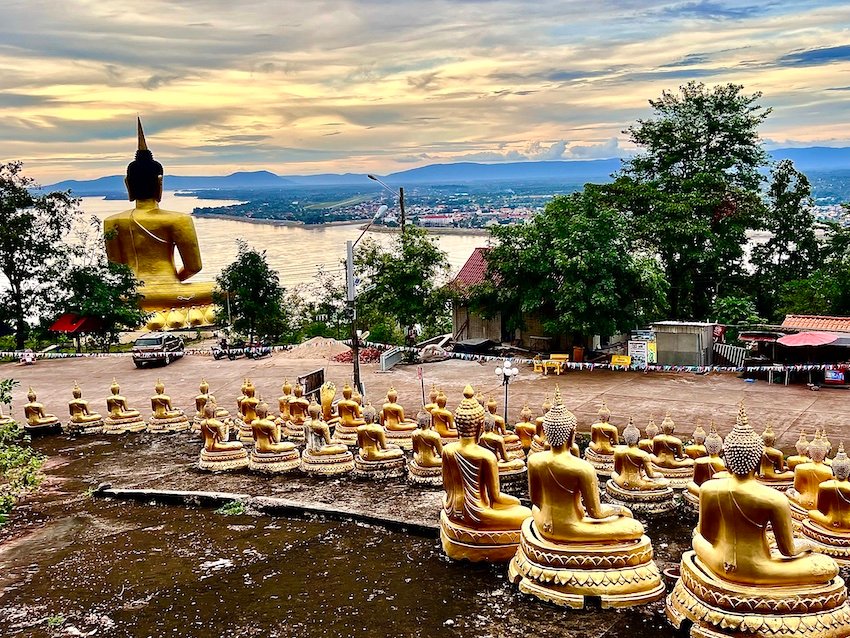
I stayed at the Sanga Hostel near the town centre which was clean, well-organized and had a wonderful owner who was incredibly helpful. The property allows guests to store larger luggage at their property free of charge as they go on excursions on the Bolaven Plateau and Don Det.




The Pakse Hotel & Restaurant is an excellent mid-range option which has privates for about $30USD. Happy hour at their rooftop patio is one of the best places in the Pakse to watch the sunset. A friend of mine stayed at Le Jardin Hotel and absolutely loved it. Set a little outside the downtown centre, Le Jardin hotel is a garden oasis of peace, tranquility and luxury in Pakse.
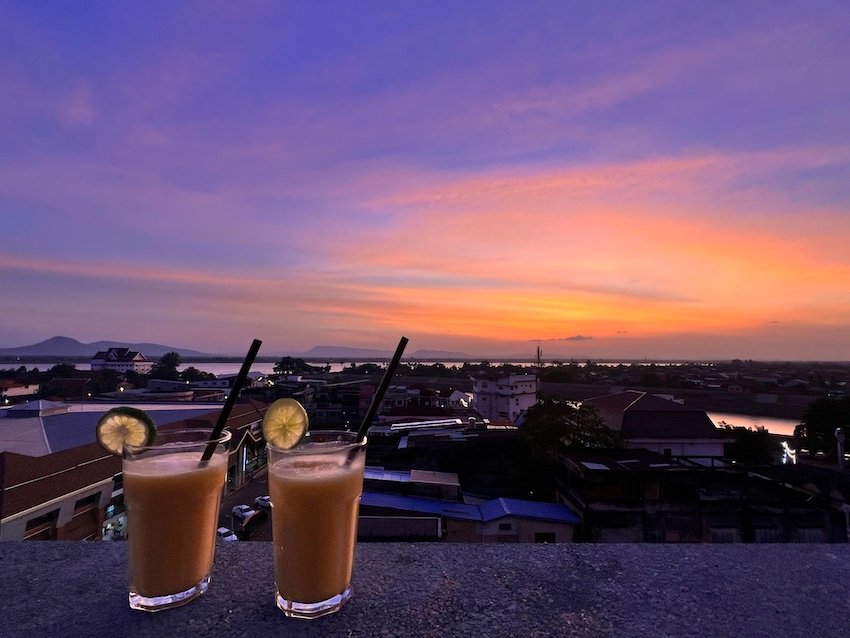
Don Det:
Don Det is an island in the Si Phan Don “Four Thousand Islands” archipelago in the southern Champasak province of Laos, where the Mekong river fans out among innumerable tiny island before flowing across the Laos-Cambodia border. I travelled to Don Det through a bus+ferry transfer from Pakse.





The Four Thousand Islands are tranquil rural communities – heavily reliant on agriculture and fishing. Don Det is one of the more populated islands in Si Phan Don, and one of the centers for tourism in the region.

Don Det is actually connected by bridge to neighbouring island Don Khon. Most restaurants, guests houses and services on clustered on the northern tip of Don Det by the ferry terminal. Staying on the west side of the island allows for viewing beautiful sunsets.


Sunset Bar and Bungalows are an excellent budget accommodations option right by the ferry terminal with riverside views. Private rooms start at around $10USD. For an upscale option that includes a pool and lounge area, consider the Golden Hotel Don Det – one of the few properties that has pool on the island. For sunrise lovers BABA Guesthouse on the East side of the island has a wonderful riverside lounge area and comfortable rooms with air conditioning. If you’re willing to take a risk without a reservation – try Tena Bungalows (see map). I got a riverside private bungalow with a balcony and private bathroom for the cost of a beer per night ($3.75USD, Fall 2022 pricing) – but they don’t take reservations – not even when you arrive at the property and try to book ahead. They told me to come back the day I wanted to check in and then they would accommodate me if there was space. Unorthodox, yes. But well worth it if you want amazing budget accommodations and you don’t mind a bit of uncertainty.
My private room at Tena Bungalows in Don Det overlooked the river and cost just $3.75(USD). At the time of my visit (Fall 2022) they did not take advanced reservations.
Trip costs for 2 weeks in Laos:
Accommodations: $68.93USD
Transportation: $130.32USD
Food and Dining: $140.00USD
Excursions and rentals: $106.00USD
Total: $445.25USD

Recommend Reading List:
- Lonely Planet Laos by Austin Bush, Bruce Evans, and Nick Ray: A classic travel guide is a great resource to have during your travels. I used the eBook guide to save on space and weight.
- Crescent Moon over Laos by Mark Boyter: a true account of a young westerner’s 18-day journey in Laos in 1990 – just a few months after the country was reopened to Western travel after being closed for a decade.
- Run Me to Earth by Paul Yoon: a beautifully haunting, visceral story about 3 orphans trying to survive the nightmarish conflict that plagued Laos in the 1960s.





Final Thoughts on Visiting Laos in 2 weeks:
Laos is a country of contrasts, where a visages of a tumultuous pre-colonial and colonial history mix with a country that is rural but rapidly modernising. Generations of conflict may have scarred the country’s past, but not the generous hearts of the people who live here. Despite being forged in the crucible of endless conflict, Laos is one of the most laidback and friendly countries I have visited in the world. My heart felt at peace here. The gentle people, the breath-taking scenery and beautiful towns and cities made me feel quietly grateful that the rest of the world tends to overlook this beautiful part of the globe. While Laos is a geographically tiny country, 2 weeks in Laos only left me feeling like more time is needed.


